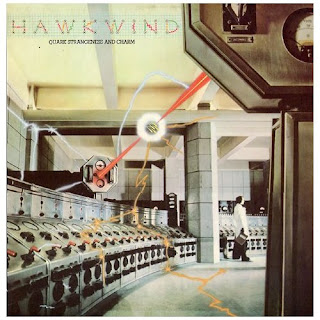Following on from the 2014
'Landscapes of Tomorrow: J.G. Ballard in Space and Time' conference, a new edited volume of essays,
J.G. Ballard: Landscapes of Tomorrow, has been published by Brill. The publisher recently shared an
editor interview on their Facebook page, reproduced below:
An interview with Richard Brown, Elizabeth Stainforth and Christopher Duffy, editors of Dialogue 22,
J.G. Ballard: Landscapes of Tomorrow, who answer questions about the volume they recently collected and edited for the Dialogue Series.
1. Describe your interest in J.G. Ballard’s life and art. How did you come to study his writings?
Richard Brown: Personally speaking, I’ve been a fan since I was studying and working in London in the 70s and 80s. It was the experimental
Atrocity Exhibition that first excited me. Coincidentally my father-in-law worked in Road Safety which lent an unusual perspective to my early readings of
Crash! As a critic of postmodern and millennial literatures I came back to his work in a big way as it matured in new directions around the turn of the century.
Elizabeth Stainforth: I first encountered Ballard’s work as a reader of science fiction and, following on from that, I did my BA dissertation on the
The Atrocity Exhibition. Later, I became interested in Ballard’s collaborations with Eduardo Paolozzi in
Ambit, which led to an exhibition and
essay for the Henry Moore Institute in 2011.
Christopher Duffy: I’ve been a long-time fan, beginning with a teenage enthusiasm for science fiction that steadily matured into an interest in experimental and postmodern literature. Given Ballard’s widespread influence in contemporary British culture – including films, music, and visual art – it seems like he has been a constant presence in many areas during my academic development. Fascinated by textual representations of space, I finally decided to make him the subject of my PhD thesis.
2. Was there a method involved in the selection of essay-chapters for the volume? What were the selection criteria for the work?
As we explain in the Introduction the volume partly emerged from a conference we ran in the University of Leeds on May 4th 2014. Ballardian expert David Pringle had once been a student at Leeds and enthusiasm for his work across the Humanities has grown strongly since those days and entered the curriculum in ways that would have been hard to anticipate back then, partly as a result of the rise of Postmodernist cultural theory and partly, no doubt also, as a result of the successful film adaptations of his work. Contributors to that conference provided the core of the volume. Gradually the Landscapes theme emerged as the focus of a volume and we selected essays and developed them through the editorial process towards various aspects of that theme.
3. How would you describe the current field of Ballard scholarship and criticism, and your volume’s relationship to it?
We chose the Landscapes of Tomorrow theme to highlight significant aspects of emerging research in physical, social, cultural, digital spaces and selected or encouraged development of essays in the light of that theme. One of the great things about Ballard’s work that we hope the volume takes forward is the wide range of academic disciplines that are beginning to register its importance centrally in what they do. Much great work on Ballard has begun to appear and we hope our volume will take this further and with an international dimension for example for North America and for China, areas where Ballard’s work has clear relevance but is not yet fully recognised.
4. How did Fay Ballard’s work come to be included in the volume, and on the book’s cover?
Fay Ballard was brilliant from the start, picking up on news of the conference and contributing fully, though really busy at the time with the exhibition of her own drawings
House Clearance, based on found objects from her father’s house following his death in 2009. She was fantastically generous in her enthusiasm for our project and in letting us use a detail from one of her “Memory Box” works, which became our cover image. Her sister Bea was also terrific in her support for our project.
5. What will your next Ballard-related projects be?
Now that
Landscapes is out we are having a small launch event together in Leeds and lots of other Ballard related projects are taking place. Chris did a lecture for Liverpool John Moore’s University around the launch of the film of
High-Rise, Liz’s invisible library collaboration with Mike Bonsall is ongoing (
http://fentonville.co.uk/invisible-library/), Richard is appearing in Rick McGrath’s
Deep Ends 2016 and soon speaking at Thomas Knowles’s day workshop on
Ballard and the Natural World at Birmingham City University.
About the editors:
Richard H. Brown, Reader in Modern Literature at the University of Leeds, has published widely on the works of James Joyce, among others, and teaches courses in modern, contemporary and millennial literatures.
Liz Stainforth is a Ph.D. Candidate at the University of Leeds, where she is conducting research on digital culture and memory.
Christopher Duffy earned his Ph.D. from the University of Leeds; his doctoral dissertation was on the writings of J.G. Ballard.


































